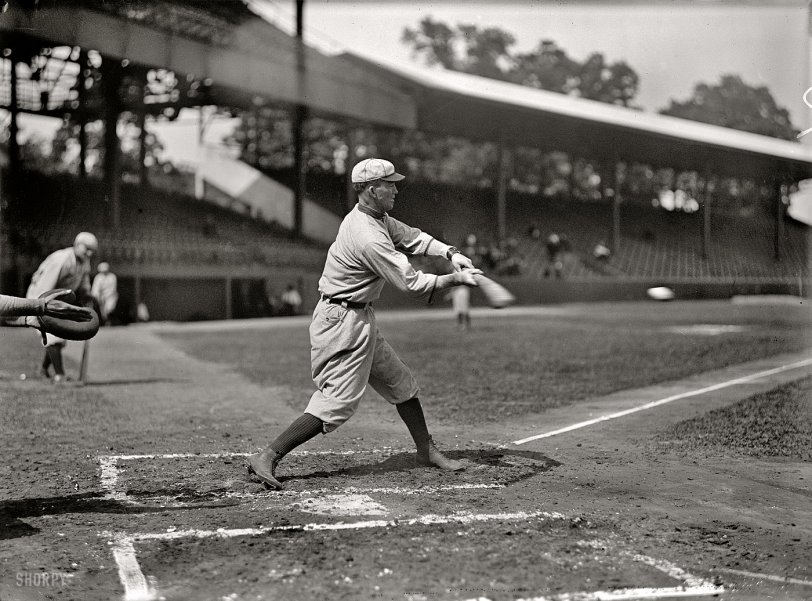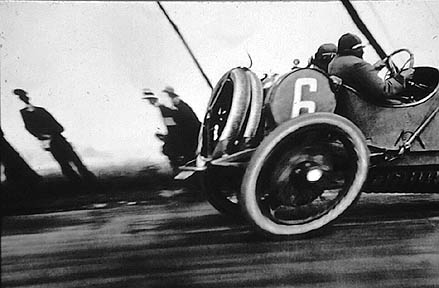


Framed or unframed, desk size to sofa size, printed by us in Arizona and Alabama since 2007. Explore now.
Shorpy is funded by you. Patreon contributors get an ad-free experience.
Learn more.

- Baldwin 62303
- Baldwin VO-1000
- Cold
- No expense spared
- Tough Guys
- Lost in Toyland
- And without gloves
- If I were a blindfolded time traveler
- Smoke Consumer Also Cooks
- Oh that stove!
- Possibly still there?
- What?!?
- $100 Reward
- Freeze Frame
- Texas Flyer wanted
- Just a Year Too Soon
- WWII -- Replacing men with women at the railroad crossing.
- Yes, Icing
- You kids drive me nuts!
- NOT An Easy Job
- I wonder
- Just add window boxes
- Icing Platform?
- Indiana Harbor Belt abides
- Freezing haze
- Corrections (for those who care)
- C&NW at Nelson
- Fallen Flags
- A dangerous job made worse
- Water Stop
Print Emporium
Frozen Summer: 1913

Washington, D.C., in 1913. "Baseball, professional. St. Louis players." Harris & Ewing Collection glass negative, Library of Congress. View full size.
Shutter direction of Travel...
On modern SLR cameras the shutter slit moves in a vertical direction (the slit is horizontal and the direction is vertical). That is why you get a black band at the bottom of the image if you exceed the max flash sync shutter speed.
Back in the early 60s when I played around with an old Speed Graphic the direction of slit movement was definitely horizontal. You could set the shutter to a slow speed and see it open and close from left to right (or vice versa, I don't remember which) on the ground glass if you didn't put a film holder into the camera.
I suspect there was more room for the shutter mechanism for it to move side to side in those old cameras even though it had to travel a farther distance since it was traveling across the wide direction of the format.
Here is a link explaining how it works, including the race car photo mentioned in an earlier post...
http://people.rit.edu/andpph/text-slit-scan.html
The elongated baseball and the curved bat in this Shorpy photo are exhibiting the same distortion as the wheel in the race car photo.
[The "old cameras" that took this baseball photo and the racecar pictures used vertical-travel shutters (if the baseball camera had used a horizontal-travel shutter, the bat and its shadow would match, and the ball would have a shadow). The baseball is elongated horizontally because it's moving horizontally. The shutter artifact exhibited by the racecar wheels is tilting, not elongation. - Dave]
George at bat
That's George Stovall swinging the bat.
Baseball
As a former catcher, I couldn't help but notice how much farther from the batter the 1913 receiver is than what is common today. From the position of his hands, he may not be in much of a squat.
Those were the days when starting catchers often hit .190 to .220, since their hands and bodies took such a beating.
Simply Amazing!
Dave, your website never ceases to amaze me!
Not only do we get to see incredible photos but we also get to learn along the way as we enjoy these great photos.
We get to learn about photo anomalies, some of the changes that have taken place in photography over its many years and in this case we also learn about unusual batting stances.
Keep up the great work of locating and posting these fabulous photos and to all the Tipsters, anonymous and otherwise, keep sharing your knowledge and insights.
Thanks!
Swinger
Hey, thanks Ole Cooter, for that bit of knowledge on old time batting styles. Would have never figured that was a swing, not a bunt. That explains the straight stance. My first comment was what a weird bunting style. Now I'm going with it being a verrrry weird hitting style, Ty Cobb split hands or not. Matter of fact, I looked him up to see if I could find something about his batting style...and found this quote attributed to him:
"Someone will hit .400 again. Somebody will get smart and swing naturally." Maybe he was referring to that split hand thing.
Also found out he became quite wealthy, as in millions, as an early investor in Coca Cola shares and cotton futures amongst other things.
Shadow Question 2
"When the bottom of the plate was exposed, the ball hadn't entered the frame yet, and the batter hadn't swung."
So why is it that the photographer was able to catch the bottom half of the batter in motion, even though his shadow is of before he moved?
[The shutter curtains create a slitlike horizontal aperture that moves from the bottom of the frame to the top, smoothly traversing an interval of, let's say, around a hundredth of a second; the farther you get to the top of the frame, the later it is. That should explain it. Right? As far as the bottom half of the batter goes, that part of him isn't moving much. The things that are moving are his arms, the bat and the ball. Think of the picture as being made of a hundred skinny horizontal photos, all taken at different times, stacked on top of each other. As you move to the top of the picture, each one is taken slightly later than the one under it. - Dave]
Shadow question
How is it that his shadow and the ball change places, but his feet move? Wouldn't the shadow and his feet be in the same spot when the picture developed? Or why would it not be that his feet and shadow stay the same, but his upper body moves? Help a non camera friendly person out please!
[Eh? I have no idea what this means. - Dave]
Bottom's Up
Dave asks, "The quirk is that the ball has no shadow, and the batter's shadow shows him before he's swung. Who can tell us why?"
Because the shutter travels from bottom to top, so that the bottom half of the image was exposed first?
[Exactly. When the bottom of the plate was exposed, the ball hadn't entered the frame yet, and the batter hadn't swung. Since most fast motion in photographs is horizontal, camera makers changed the direction of shutter travel with the advent of 35mm SLRs to address the issue. But in recent years switched back to vertical-travel shutters because they're more compact. - Dave]
And the Answer Is
Or maybe I should say "and the question is." The quirk is that the ball has no shadow, and the batter's shadow shows him before he's swung. Who can tell us why?
Focal plane shutter
Well, a focal plane shutter is something like a window shade; visualize the photographic plate being the window pane and the shutter, like the shade, being pulled down its length. In the camera, though, the action is horizontal, so in effect the shutter is following any horizontal action that may be in the scene. With a normal leaf shutter, an object going too fast for the shutter to stop it is an indistinct blur; the same object shot using a focal plane shutter would have tendency to distort the object horizontally as the shutter follows it, as we see with both the bat and the ball here. That's my story and I'm sticking with it.
[The bat and the ball appeared elongated horizontally because this is, in effect, a time exposure of horizontally moving objects. - Dave]
Focal plane
At high speeds, the shutter is only a slit. As it traverses the film plane, a round object being photographed is frequently shown as an oval. Old-time racing cars were a good example.
[Kind of. The example often cited is racecar wheels being ovals that are tilted in the direction of travel. - Dave]

Focal Plane anomaly
Because the bat and ball are travelling in the same direction as the slit in the shutter, they appear elongated. The same effect made race cars appear to be leaning forward in photos, and the effect is still used in drawings and cartoons to indicate speed. The effect is apparent in the older images because the film size was so large, and the shutter slit took a longer time to cover the film plane. In today's 35mm cameras, you couldn't notice the effect.
[Not quite. The shutter in cameras of this era traveled vertically, which is what gives rise to the quirk noted in the caption. The ball appears elongated horizontally because it's traveling horizontally. - Dave]
Double bat?
Think what you see as two exposures of the bat is actually another player in behind?
[Not quite. - Dave]
Double Reflex/Double Exposure?
Dave, is it that this plate is actually a double exposure? The fact that the bat can be clearly seen in two different orientations in the shot kind of gives that away....
And isn't that caused by the picture being a double reflex (shutter opens twice in very rapid succession)?
[Nope. Getting warm though. Next guess? - Dave]
Freeze Frame
Was it common to be able to capture high-speed action in the format used for this photograph? Or is this a "squeezed the shutter at the right moment" thing?
[It was a matter of squeezing the shutter at the right moment -- just as it would be today. Although "burst mode" makes doing that a lot easier for us. This photo demonstrates a quirk of the focal-plane shutters used a hundred years ago. Can anyone spot it? - Dave]
1913 St. Louis Browns
He's not bunting, he's full-out swinging the bat. He utilized the Ty Cobb split-hands grip, not so rare back then. Last player I am aware of that used the grip was Don Wert in the 1960's. No power, but with the mush ball they used then, placement was more important than distance.
Bunter banter
For all you ex-baseball players out there, is that not the strangest bunting stance you've ever seen? And at the pro level. I mean everyone of my old coaches would have chewed us good for not squaring around and getting our hands farther apart for better bat head control. Of course, maybe that just shows us how bunting principles have improved over the years. And that catcher was just asking for a few broken fingers with his hand exposed like that. But then you have to consider the glove he had to use. Sort of weird the angle of the glove though. Tough guys back then.
























On Shorpy:
Today’s Top 5